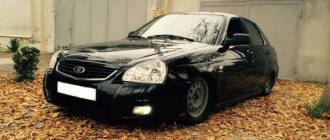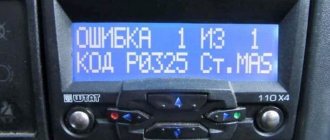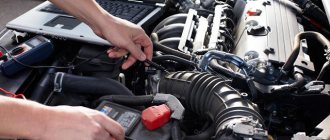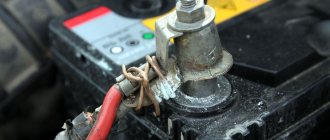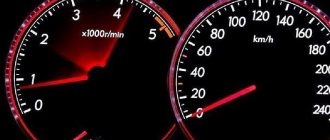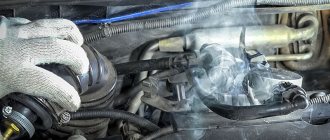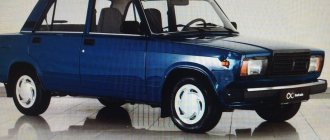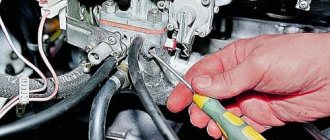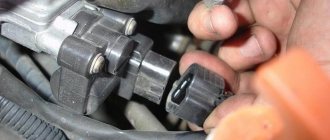What does code P0507 mean?
Trouble code P0507 is triggered when the engine idle speed is higher than expected. All modern engines have a desired idle speed - usually between 600-1000 rpm.
The control unit uses position sensing and throttle adjustment to achieve these speeds. If the idle speed exceeds these set values and the maximum adjustment zone, the control unit will generate this error code.
Code P0507 is a common code for vehicles equipped with Electronic Throttle (E-Gas). Newer vehicles usually use E-gas.
The throttle valve is only called electronic. It replaces the old throttle body with a cable between the gas pedal and the throttle body.
The electronic throttle body uses sensors on the gas pedal and an electric motor in the throttle body to provide the desired acceleration. But this does not mean that this error code must necessarily be related to a faulty throttle valve. It can also have many other causes.
Self-diagnosis
Without going into details of the operation of all electronics, we note that the functioning of all vehicle systems is “monitored” by an electronic control unit (ECU).
It receives information from numerous sensors. Like any computer, the ECU requires software called firmware. This firmware is capable of analyzing indicators received from sensors, comparing them with normal parameters, identifying errors and storing these errors in memory.
Carrying out self-diagnosis
In the Chevrolet Niva, as in some other cars of the VAZ family, some parameters can be displayed on the VDO dashboard. It is often called an integrated on-board computer.
Testing is started by first pressing the daily mileage reset button and simultaneously turning the ignition key.
All instrument needles begin to move, which indicates the beginning of the testing process. Pressing the same button once will cause the firmware version to appear on the display, and pressing it again will give us a reading called an error code.
Panel codes should not be confused with ECU codes, which are diagnosed by external devices.
| Error code | Decoding |
| 1 | Processor faults |
| 2 | No signal from the fuel level sensor |
| 4 | Increased voltage of the on-board network (exceeds 16 V) |
| 8 | Reduced voltage on-board network |
| 12 | Control indicator malfunction |
| 13 | No signal LAMDA probe |
| 14 | Increased coolant temperature |
| 5 | Reduced coolant temperature |
| 19 | Error from HF sensor |
| 21-22 | Error with TPS |
| 24 | Error from speed sensor |
| 27 — 28 | Incorrect CO potentiometer parameters |
| 23 — 25 | Error from intake air temperature sensor |
| 33 — 34 | Error from the MAF sensor |
| 35 | Error from sensor XX |
| 41 | Error from phase sensor |
| 42 | Ignition system malfunction |
| 43 | Error from knock sensor |
| 44 — 45 | Rich/lean fuel mixture |
| 49 | Loss of vacuum |
| 51 — 52 | ROM/RAM errors |
| 53 | No signal from CO potentiometer |
| 54 | No signal from the octane corrector |
| 55 | Load on the power unit |
The operation of the on-board computer cannot be called flawless, since many errors arise as a result of software failure. You have to reset the errors by holding down the daily mileage reset button in testing mode. This diagnostic method is not entirely convenient for the reason that the error code can be the result of the sum of two codes at the same time (10=8+2).
Symptoms of P0507
The most common symptom of a P0507 code is that you will notice that the idle speed is higher than normal. You will also likely see a check engine light.
There may be other symptoms such as misfire, rough idling and acceleration if the cause of P0507 is a lean/rich mixture.
- High idle speed.
- Rough idle.
- RPM jumps XX.
- Check Engine.
- Uneven acceleration.
How to Diagnose Code P0507
This diagnostic method is used by the most professional auto mechanics. Some tools may be required to complete these tasks.
Always connect the car charger before using the OBD2 scanner and other diagnostic tools. Low voltage can damage control units and lead to errors.
A couple of weeks ago, when driving on a well-warmed engine, the speed began to freeze, then dropped to normal, and it appeared unpredictably at any moment. Error 0507 appeared on my computer. The worst thing is that when the problem is not permanent, it would have been better if it had broken completely...
Full size One fine moment, at an intersection, while letting off the gas, the car stalled, started it up and drove off. A couple of days later, the same thing happened, only the car wouldn’t start, I pressed the gas pedal and started it, released the pedal, and it stalled again. I started it again, revved it up, it seemed to work, but the idle was too low. I got home, parked the car, wanted to go during the day, but the car wouldn’t start, it just starts with the gas pedal and stalls. Well, in general, everything is clear, the problem is most likely with the idle air regulator. Before getting into the throttle assembly, I decided to read what people write, there is a lot of information, but essentially little, but I managed to extract something from this pile of information. 1. I went to the official and bought there - Idle air control 2123 - 900 rubles. — Damper position sensor 2123 — 350 rub. — Gasket of the throttle body pipe 2123 50 rub.
Full size I have long realized that there are a lot of defects in stores, I came across some articles in which it is written that replacing the idle speed control did not change anything, it was just not working, people advised to remove it from the working car for a test. 2. Checking the system for leaks, I came across a comment on how to easily check the entire system for vacuum tightness, because Due to air leaks into the intake system, similar symptoms may occur. In general, we start the engine, unscrew the pipe clamp, after the MAF (Mass Air Flow Sensor), quickly pull it off and plug it with the palm of the hand, the engine stalls, the palm is sucked in, we hold our hand and wait, if the system is not sealed, the palm will immediately release in case of a major leak , in a particular case, you can hear where the air is leaking into the system. In my case, my hand was suctioned and the vacuum held for 30 seconds, then I removed my hand myself - the system is sealed.
I removed the throttle assembly, removed the tubes and connectors to the sensors there, but did not disconnect only the heating tubes of the assembly. The first thing that caught my eye was the absence of a plastic pipe in its place in the nozzle of the unit, which was found inside the receiver, somehow I pulled it back out, it’s not entirely clear why it is needed there at all. (By the way, I forgot to put it back, I had to take everything apart again)
I began to unscrew the idle speed control and was surprised that the fastening screws were not tightened. I wiped all parts of the throttle assembly, it was generally not very dirty... I removed the remnants of the old gasket. Installed a new valve. Replaced the throttle position sensor. I put everything back together, started it, the car started, gave it gas and the revs froze again, got upset, decided to drive a little, warm up the engine, it didn’t help, the revs froze and then dropped. I checked the system again for vacuum, everything was fine, I decided to reset the terminal from the battery just in case, waited a minute, put the terminal on and started the engine, revved it up, the revs dropped as expected, drove for 4 kilometers, everything was fine.
Upd: 09/05/17 On the advice of the Drayvovites, I removed the acoustic pipe, I didn’t notice much of a difference, we’ll assume that it was an extra detail... By the way, there was a good dent on one side of the pipe, the origin of which is unknown...
The P0507 error code reads as “IAC control system speed is higher than expected.” Often, in programs that work with an OBD-2 scanner, the name may have the English spelling “Idle Air Control (IAC) System RPM Higher Than Expected.”
Car diagnostics
Diagnostics of the engine and other systems and units in Chevrolet Niva, Cobalt, Lacetti, Lanos, Captiva, Cruze, Aveo 2004, 2005, 2010, 2012 and other model years allows you to timely identify the fault. Thanks to this, the car owner can prevent more serious damage. The errors themselves when diagnosing with a laptop or on a VDO display or other factory dashboard will be different. In the first case, the car owner receives the most accurate information about breakdowns, which allows them to correctly decipher and remove faults. Error combinations will be four-digit.
During self-diagnosis on the on-board computer State on the instrument panel of a VAZ 2123 or Chevrolet Tahoe, Orlando, Blazer, Lanos, Niva, Lacetti, Cruz, Captiva, Epica, Aveo in the T250 and T300 body, faults are displayed in two-digit form. Instead of combinations, messages may appear on the display to warn motorists.
Pressing the odometer button on the dashboard
How to do it yourself?
There are two ways to check for errors in a Chevrolet: self-diagnosis or using additional equipment or a computer. In order for the on-board computer to test for faults, you need to hold down the button on the odometer to reset the daily mileage and turn the key in the ignition. This will cause the needles on the speedometer and gauges to start moving along the scales. And when you press the button again, the ECU will display a message on the display about the version of the firmware being used. After the next press, combinations of problems, if any, will appear on the screen.
What codes may appear on a Chevrolet Niva after self-diagnosis:
- 1 - the microprocessor is not working correctly;
- 2 — a break was detected in the electrical circuit of the fuel level controller in the tank;
- 4 - increased voltage level in the vehicle’s on-board network, amounting to more than 16 volts, diagnostics of the battery and generator unit is required;
- 8 - the voltage in the Chevrolet electrical network is low, the same checking steps are performed;
- 12 - the control indicator is not functioning correctly;
- 13 - the control unit does not receive a signal from the lambda probe;
- 14 - the ECU received a signal about overheating of the coolant, this can lead to boiling of the engine;
- 15 - the operating temperature of the antifreeze in the cooling system is too low;
- 19 - the ECU received a signal indicating that the crankshaft is not operating correctly; we recommend testing the controller;
- 21-22 - the throttle valve is in the wrong position;
- 23-25 - the intake air temperature does not correspond to the norm;
- 24 - the dashboard does not receive an impulse about the speed of the vehicle;
- 27-28 - the control unit reports violations in the level of exhaust gases;
- 33-34 - The ECU receives incorrect data on air flow;
- 35 - the power unit does not operate correctly at idle;
- 41 - an incorrect signal is received from the phase controller or camshaft sensor;
- 42 - The computer reports problems with the ignition;
- 43 - incorrect impulse from the knock sensor;
- 44-45 - incorrect composition of the combustible mixture;
- 49 - The ECU detects a loss of vacuum;
- 51 - ROM malfunction;
- 52 - The ECU has detected a RAM error;
- 53 - the control module does not receive an impulse from the exhaust gas regulator;
- 54 - the octane corrector controller does not respond;
- 55 - the load on the power unit is too high;
- 61 - the oxygen controller gives incorrect readings.
Technical description and explanation of error P0507
OBD II trouble code P0507 is defined as "Idle Air Control (IAC) speed higher than expected." Set when the powertrain control module (PCM) is unable to maintain or control engine idle speed.
In most cases, the PCM will attempt to make adjustments to various systems such as fuel timing, ignition timing, injection pulse timing, and others. Trying to maintain a given idle speed. However, when this limit is reached, the PCM will set code P0507 and turn on the warning light.
Idle speed in gasoline engines is adjusted and controlled by the idle air control valve, which is usually located on the throttle body. The valve is driven by a stepper motor, which receives commands from the PCM based on information received from various sensors located on the engine.
As long as the throttle valve remains closed, idle speed and quality are controlled by the PCM through the idle air control valve.
For example, if the engine is started in sub-zero temperatures, the PCM commands the valve to allow less air to enter the engine. This allows you to enrich the fuel-air mixture and creates conditions for regulating idle speed in cold weather.
As the engine warms up and combustion becomes easier and more complete. The PCM commands the idle air control valve to increase the amount of air entering the engine in response to changing conditions.
If the load on the engine changes, for example, when some electrical consumers are turned on or off. The PCM adapts the signal voltage to the idle air control valve. To ensure that the idle speed remains stable and at the RPM specified by the manufacturer.
Note that the idle air control valve is closed by the PCM when the throttle valve is opened. This is done in order to prevent excess air from entering the engine.
The most popular Niva 21214 errors and methods for eliminating them.
Engine error codes (P0000)
Note!
Chevrolet Niva on-board computer errors found in this way reflect the most accurate state of affairs at the current time.
- 0102/103 - the pulse from the mass air flow sensor is too low or high, damage to the device or its wiring may occur;
- 0112-0113 – similar indicators from the device for measuring the actual temperature of the intake manifold;
- 0116 – the level of the DTOZh signal is outside the permissible limits, urgent diagnostics of the system is required;
- 0117/0118 – is responsible for the above element and indicates that the signal level is too low/high; it is also necessary to check the sensor itself;
- 0122/0213 – excessively weak or strong impulse from the TPS, cleaning the mechanical part of the device or replacing the sensor may help;
- 0130-0132 – incorrect data transmission from DC1 installed to the catalytic converter; the part may need to be replaced or cleaned;
- 0133 – is responsible for the above element and indicates a slow response of the device to driver commands;
- 0134/0135 – breakage of the power line/breakage of the heater DK1;
- 0136 – short circuit with contact to the negative wire of DK2;
- 0137/138 – critical drawdown/exceeding the permissible norm of the signal from the oxygen sensor installed after the exhaust gas converter;
- 0140/0141 – open circuit of the wiring or breakdown of the DC2 itself;
- 0171/0172 – malfunction of the fuel supply device; the mixture is excessively lean or rich; it is necessary to check the fuel lines for damage; the fuel pump and its relay should also be diagnosed;
- 0201-204 – damage to the injector driver control wiring for each engine cylinder in series;
- 0261/0264/0267/0270 – short circuit on the body for wiring the driver of each injector in series;
- 0262/0265/0268/0271 – similar, only with a touch to the vehicle’s on-board wiring, for each cylinder, respectively;
- 0300 – the electronic control unit has detected multiple misfires, the gasoline supply is turned off;
- 0301-0304 – similarly, misfires are observed for each working chamber, respectively, the controller cuts off the flow of fuel to the damaged module;
- 0327-0328 – the knock sensor is not working correctly, a weak or too high signal is detected;
- 0335 – DPKV is out of order or its wiring is damaged, you should immediately perform physical diagnostics of the sensor;
- 0336 – the same sensor does not work correctly;
- 0337/0338 – short circuit to the body/break in the DPKV wiring;
- 0340 - therefore, error p0340 Niva shows that there are problems in the circuit of the above sensor;
- 0342 – critical reduction in the permissible impulse from the DPKV;
- 0343 - error 0343 Niva warns that the actual impulse from the DPKV is above the permissible limit;
- 0422 – obstruction of the catalytic converter has been detected, the device needs to be replaced;
- 0441 – the actual value of the flow meter differs from the calculated values;
- 0443 – the canister purge valve is faulty or there is serious damage to the power cables;
- 0480/481 – failure or damage to the wiring of the fan relay No. 1/2 of the cooling system;
- 0500 – the speedometer sensor shows incorrect data;
- 0503 – DSA pulse is interrupted or the wiring is short-circuited;
- 0506/507 – the power plant XX regulator is blocked, a low or high speed level is detected;
- 0560 – the performance of on-board systems is limited due to a critical voltage drop, usually the cause is a deep discharge of the battery;
- 0562/563 – there are voltage surges in the on-board network, up or down from the reference value;
- 0601 – error in writing or reading information for a permanent recording device;
- 0603/604 – similar for RAM;
- 0615 – there is no power to the starter relay, you need to check the safety insert and wiring;
- 0616/617 – Short circuit on the on-board network or on the car body of the starter relay wiring;
- 1135 – interruption or incorrect operation of the control wiring DK1;
- 1140 – mass air flow sensor error, the measured value differs from the calculated value;
- 1141 – disruption of the operation of power lines DK2;
- 1386 – incorrect signal from the mixture detonation channel length sensor;
- 1410 – Short circuit of the canister purge valve lines with contact with other wires;
- 1425 – similar, only with contact on the car body;
- 1426 – complete break in the lines of the canister purge valve – no pulse;
- 1501/02 – there is a short circuit in the control and power lines of the main fuel pump touching the standard wiring or body, respectively;
- 1509 – critical overload of the power plant idle speed control relay;
- 1513/514 – short circuit of the above module with contact to the wires or car body;
- 1541 – control of the electric fuel pump is lost, there is a break in the cables;
- 1570 – APS does not respond, control elements or control lines may be damaged;
- 1602 – error 1602 Niva indicates that there is no power in the controller;
- 1606 – the rough road sensor is acting up;
- 1616/617 – too weak or strong impulse from DND;
- 1640 – error in writing or reading the EEPROM system;
- 1689 – false data in the error memory, the system needs to be reset;
- 2188 - error 2188 Niva warns the user that an excessively rich fuel mixture is supplied to the engine at idle speed (the engine choke).
Symptoms of malfunction
The main driver symptom of P0507 is the MIL (Malfunction Indicator Light). It is also called Check engine or simply “check light”.
They can also appear as:
- The “Check engine” warning light on the control panel will light up (the code will be stored in memory as a malfunction).
- Floating speed, as well as attempts to stall at idle.
- Idle speed is higher or lower than normal.
- The engine may stall if the idle speed is not maintained by pressing the accelerator pedal.
Depending on the symptoms, the severity of a P0507 code can range from moderate to severe. Therefore, it is recommended to resolve this issue as soon as possible.
Resetting errors on Chevrolet
If malfunctions are found in the operation of certain systems, then the first thing to do is to correct them. If after repair the codes remain in memory and do not disappear, then you can eliminate them yourself.
There are several options for resetting errors:
- Clear codes by disconnecting the battery terminals. Open the hood and loosen the bolts on the clamps, then disconnect the alligator clips. Wait about one minute, then connect the crocodile clips into place.
- Using the on-board computer. The device has a special function for this. To delete the code, go to the “errors” section in the main menu, then press the middle key on the panel. You will hear a beep and dashes will appear on the computer display. If they exist, then the errors have been successfully removed from memory.
- Resetting can be done using the odometer button. You need to hold it down for five seconds. About 15 seconds will pass, after which the numbers will appear on the display. We wrote about errors during self-diagnosis at the beginning of the article, but if the number 0 appears on the display, then there are no problems with the operation of the sensors, engine and other systems in the car.
How to Troubleshoot or Reset Trouble Code P0507
Some suggested steps to troubleshoot and fix error code P0507:
- Read all data and stored error codes using an OBD-II scanner.
- Clear the codes and check if the P0507 code appears again.
- Observe the engine's operation at idle speed, with the gear engaged and disengaged. To check whether the engine idle speed corresponds to the values specified in the manufacturer's technical documentation.
- Check the engine for vacuum leaks.
- Inspect the throttle body for carbon buildup. And also on the body and inlet of the idle air bypass control valve.
- Disconnect and check the idle air control valve.
- Check if the idle air control valve passages are clogged.
VAZ error codes - table with a list of all errors
Very often, various errors occur in VAZ cars, and in fact, it is not necessary to go to a mechanic to diagnose them; it is enough to read the error code and look at its value in the error table.
The error codes are the same and apply to the following VAZ brands:
1118 Kalina, 2104, 21041, 2105, 2107, 21074, 2109, 21093, 21099, 2110, 21102, 21103, 2111, 2112, 2113, 2114, 21114, 21124, 21 15 with engine injector 8 and 16 valves, 21150 , 21154, 2131, 2170 Priora, 2190 Granta, 2123, 21214, 2131 Niva;
Diagnosis and problem solving
Connect the scanner, read and write down all available codes. This information may be useful if an intermittent fault is later diagnosed.
If other codes are present along with P0507, diagnose and resolve them in the order in which they were stored. The most likely additional codes are usually related to the vacuum system.
Therefore, check the vacuum system for leaks caused by damaged vacuum lines. If necessary, repair and clear all codes before operating the vehicle. Then, retest the system to see if any codes are returned.
Throttle valve
If the code persists, remove the throttle body from the intake tract and inspect it for excessive carbon deposit buildup. In some cases, it may be possible to remove light carbon deposits from the throttle body and auxiliary air passages using approved cleaners.
However, heavy deposits usually cannot be removed without damaging the throttle body or idle air control valve. In these cases, the best option is to replace the throttle body or idle air control valve with original parts.
When installing cleaned or replaced parts, ensure that all seals and gaskets are also replaced to prevent vacuum leaks. Double check all vacuum line connections before starting the engine or operating the vehicle.
Checking wires and connections
If the P0507 code persists, perform a thorough visual inspection of all associated wiring. Look for damaged, burnt, shorted or corroded wires and connectors.
Once no visible damage is found, check resistance, ground, and reference voltage. Compare all readings obtained with the data specified in the manual. Replace wiring as necessary to ensure all readings are within manufacturer specifications.
Stepper motor and idle control valve
Check the actual signal voltage that reaches the stepper motor at the connector. Using a scanner, command the idle air control valve to open. Compare the obtained value with the values specified in the manual.
Special diagnostic programs usually produce a voltage range that corresponds to the degree of opening of the idle air valve. And sometimes the degrees of rotation of the stepper motor.
These readings must correspond exactly to the stated values, otherwise the harness must be replaced. If all readings obtained are consistent with the stated values, the stepper motor is faulty and must be replaced.
These steps should solve the problem with error P0507. But if it still appears again, then perhaps the problem is periodic. In such a case, diagnosis can be challenging. And sometimes it is necessary to give the malfunction a chance to worsen in order to understand exactly where the problem is.
Computer diagnostics
The most complete diagnosis is possible with a computer or laptop. In order to use this method, you must purchase an adapter. This adapter performs two functions at once. It is an adapter from a K-line port to a USB port or to a COM port. It also acts as a decoder, which allows you to transmit signals from the ECU to the PC. You will also need to install the appropriate software on your laptop. There are a lot of free versions on the Internet. There are universal programs, as well as programs written for a specific car. After connecting to the computer, you will need to turn on the ignition and launch the program. The connection will happen automatically.
The interface of the computer program is very convenient and allows even an inexperienced user to navigate intuitively. All functionality can be divided into several sections. These are parameters, errors and settings. If the first two sections are informational, then using the third section you can control the vehicle systems.
Few people know that the Chevrolet Niva has a self-diagnosis function that produces basic error codes that can be used to quickly find and fix vehicle problems. It is not difficult to carry out this procedure yourself; just press the odometer button firmly and turn on the ignition at the same time. The arrows on the speedometer will creep up, after pressing again, an information message about the firmware version will be displayed, and the next time, all error codes will appear on the monitor, naturally, if there are malfunctions in the car.
On which cars is this problem most common?
The problem with code P0507 can occur on different machines, but there are always statistics on which brands this error occurs more often. Here is a list of some of them:
- Audi (Audi a4)
- Chery (Chery Amulet, Tiggo, Fora)
- Chevrolet (Chevrolet Aveo, Cruz, Optra, Tahoe)
- Chrysler (Chrysler 300c)
- Daewoo
- Dodge (Dodge Caliber)
- Ford (Ford Focus)
- Geely
- GMC Sierra
- Honda (Honda Accord, SRV)
- Hyundai (Hyundai Accent, Getz, Santa Fe, Sonata, Tucson, Elantra)
- Infiniti (Infiniti fx35)
- Isuzu (Isuzu Trooper)
- Jeep (Jeep Grand Cherokee)
- Kia (Kia Magentis, Sorento, Spectra, Sportage)
- Lifan (Lifan Solano)
- Mazda (Mazda 3, Mazda 6)
- Mercedes (Mercedes e210)
- Mitsubishi (Mitsubishi Galant, Montero)
- Nissan (Nissan Hell, Altima)
- Opel
- Pontiac (Pontiac Sunfire, Grand Prix GXP)
- Saturn (Saturn SC)
- Skoda (Skoda Octavia)
- Subaru
- Volkswagen (Volkswagen Passat, Touareg)
- VAZ 2107, 2110, 2112, 2114, 2115
- Gazelle ZMZ 405
- Lada Kalina, Niva, Priora
With fault code P0507, you can sometimes encounter other errors. The most common ones are: P0068, P0106, P0118, P0171, P0174, P0300, P0301, P0420, P0505, P0506, P1125, P1515, P1295, P2279.
Trouble P0507 is a general trouble code that indicates there is a problem with the idle speed control system. DTCs P0505 and P0506 may also appear along with this code.
Diagnostics of Niva Chevrolet
The Chevrolet Niva diagnostic connector helps you obtain information about how most units work, into which special equipment is connected via Bluetooth or a cable. Therefore, if you want to conduct independent diagnostics, it is important to know where it is.
The connector in the Niva is located under the steering wheel on the right side, and the pinout itself is under the dashboard on the driver’s side. To check the on-board computer, you need to use special equipment that transmits all the necessary information to the laptop. Data transfer is carried out using a COM port into which a K-LINE type connector is installed.
When connecting, errors may appear on the laptop screen. At this moment, there is no need to worry, since the appearance of such messages may be due to a lack of communication with the device itself. You should also check whether the standard anti-theft system is installed; if so, check the adapter itself. If there is a standard location, then it is connected to the diagnostic line between the ECU and the immobilizer. And if it is missing, a plug is installed in its place. To restore communication between the contacts, a jumper is installed, as shown in the picture below:
Depending on the year of manufacture of the model, the connectors may differ from each other.
Self-diagnosis
If it is not possible to check with a special device, then this can be done using self-diagnosis, which will help to quickly identify all problems associated with the operation of the car. To do this, press the odometer button and turn on the ignition. The speedometer needle will begin to rise to the top; by pressing again, information about the firmware will appear on the screen, and by pressing again, all existing errors will appear.
Let's take a closer look at the Chevrolet Niva error codes with decoding:
During self-diagnosis, error 8 and error 14 often appear, the first informs about problems in the brake system, and the second is related to fuel consumption, quite often this is a system glitch, but in any case you need to replace the sensor responsible for these mechanisms, or reset the memory by resetting the battery terminals.
As practice shows, knowing how to perform an independent check is very useful, since this knowledge helps to quickly identify a malfunction and eliminate it in a timely manner.
Check engine error
If a check light comes on on a Niva Chevrolet car, this warns that there are malfunctions associated with the operation of the engine. The light comes on at the moment when the engine begins to detect a failure or error and writes a specific code into its memory.
Let's look at the main reasons why this warning may appear:
- The air/fuel mixture is incorrect. This problem is eliminated by filling the tank with higher quality gasoline.
- Low engine oil level
- Engine overheated
- There are problems with the ignition system, which may be due to a faulty spark plug or ignition coil
- The power system is faulty. It is possible that fuel injection into one of the cylinders has stopped.
- Lambda probe faulty
- A separate sensor in the ECM system has failed
We can conclude that in some cases, when the engine starts and the check light is on, this may indicate that the engine is operating in emergency mode and the problem is not very critical. If the engine starts and stalls, then this is most likely a problem with the fuel supply or the crankshaft sensor has failed.
In any case, it is better not to use the car until you find out the exact reason.
Chip tuning
Some drivers do chip tuning of the Chevrolet Niva in order to increase engine power. The essence of this procedure is to remove the established restrictions by adjusting the optimal factory settings in the electronic control unit. This procedure helps to extract the additional performance inherent in the motor.
The whole process can be divided into several stages:
- Reading the necessary data from the electronic control unit
- Making the necessary adjustments
- Updating and recording new data
The main advantage of this procedure is:
- Engine power increases
- Speed limit removed
- You can change the fuel type
- All factory settings can be returned at any time
The disadvantages include:
- High cost of work
- The ECU may fail
- Increases fuel consumption, reduces system life
- Errors may appear
Each specialist has a different attitude towards chip tuning, some consider it useful, while others think that this procedure can negatively affect the performance of the car, while reducing its service life.
To summarize, we can conclude that you can identify error codes on a Chevrolet Niva either independently or using a special device. If malfunctions occur, they must be eliminated as soon as possible, otherwise this may lead to irreversible negative consequences in the operation of the entire system.
How does a mechanic diagnose a P0507 trouble code?
When diagnosing this error code, a mechanic will do the following:
- Reads all stored error codes using an OBD-II scanner.
- Review all saved data and clear error codes.
- Will test drive the car to make sure there is a problem.
- Check the vacuum wires for damage and also check for intake air leaks.
- Check the throttle body for large amounts of carbon buildup and the throttle body for proper opening and closing.
- Determines the engine idle speed when checking the idle air control valve and oil pressure switch in the power steering system using a diagnostic tool.
- Check the battery charging system.
Decoding Chevrolet Niva error codes
There is a monochrome display on the car's instrument panel. Basic information about the results and progress of self-diagnosis is displayed here.
The full list of faults is long. The factory table contains hundreds of codes, which is impossible to list. Below are explanations of the most popular faults.
Error 1 1
The power steering system does not work correctly. The module needs to be diagnosed. There may be leaks in the sealing elements.
Error 1 6
The code is an information message notifying about malfunctions in the on-board electrical circuit.
Code 2
The float in the fuel tank is out of order or does not respond. The element may have been damaged due to a strong impact or shaking. Wiring failure cannot be ruled out.
Error 8: Shniva
If the system issues a similar failure code, an inspection of the battery and power lines will help correct the situation. The corresponding indicator on the dashboard often lights up.
The error clearly indicates that the voltage in the on-board network is too low.
Code 10
Typically the error consists of two problems. Here there is an open circuit of the float and a voltage drop in the on-board network. Problems are resolved in the order determined by the owner.
Code 11
A similar breakdown indicating two problems at the same time. There is a double meaning of the cipher here, and the combination is determined in the same way as in No. 10.
Error 12: decryption
The system reports a breakdown of the vehicle's control indicator. The Check lamp will not light up even if there is a serious malfunction. As a repair, it is enough to replace the damaged element.
Error 14
The symbol means that the temperature of the antifreeze in the radiator is too high - the engine has overheated. Stop and let the system cool down. It is recommended to check the lines for leaks.
Shniva: error 16
The problem is complex and indicates the presence of errors 4 and 12. Troubleshooting is described above.
P0036 - error
It indicates an open circuit in the oxygen sensor control circuit No. 2. You should find a gap in the line.
Error 0101
The mass air flow sensor shows that the air flow does not correspond to the required one. Engine performance may drop significantly during operation.
Error P0102
He says that the signal coming from the DRV is too low. The problem is that the working part of the sensor is clogged.
Fault 0103
The opposite meaning to the above problem. The sequence of actions during repairs is similar.
Breakdown 0115
The problem is related to the coolant temperature sensor. Replace the faulty element with a new one.
Code 0123
The signal from the TPS is too high. The problem is in the throttle sensor or mechanical part.
Code 0130
Incorrect data from DC1 installed before the neutralizer. Check the sensor for contamination. If the working part is clogged, the entire module is replaced.
Breakdown 0134
Open circuit DC1. The sensor is located under the bottom of the car, which often causes stones and dirt to get into the wiring.
Code P0135
Heater circuit DK1 – no signal. Check the contact groups for oxidation and dirt.
Code 0139
The response of DK2 installed after the neutralizer is too slow. The breakdown is eliminated by diagnosing the sensor.
Code P0141
Heater DK2 is faulty. The code may be displayed as 0141 or 141.
Code P0171
The system issues 0171 - this means that the air-fuel mixture is excessively rich. Check the air line for blockages.
Error P0172
The module transmits a signal - the fuel mixture is too lean. Perform fuel line diagnostics. This is due to parasitic air suction through depressurized connections or worn hoses.
Shniva: error 0302
Multiple misfires in cylinder No. 2. Check the ignition system and fuel supply to the working chamber.
Shniva: error 0131
The signal level from DC1 is too low. The sensor grid is clogged.
Error 0328
The signal from the knock sensor is too high. A breakdown may indicate a short circuit in the internal parts of the sensor.
Error 0327
The signal level from the DD is too low. The power of the power plant often drops. The sensor needs to be checked or replaced with a new one.
Fault 0335
There is no signal from the DPKV. The wiring is damaged or the sensor is faulty.
Error 0336
The problem indicates that the control signal from the DPKV is outside the established limits. The problem is in the sensor.
Breakdown 0339
Incorrect operation of the crankshaft position sensor.
Error 0340
The problem indicates that the DPRV circuit is damaged, shorted, or completely broken.
Shniva: error code p0342
Signal too low. You need to check the control wires.
Breakdown 0343
The algorithm of actions will be the opposite. This is all due to damage to the sensor. The sensor needs to be tested using diagnostic equipment.
Malfunction P0422
Indicates that the catalyst is not working correctly. A similar glitch occurs even with short mileages and in different operating modes. To properly deal with it and not constantly reset the code, you will need to cut out the catalyst or replace the sensor, which does not always help.
Code 0441
The air flow through the valve is incorrect. Conduct diagnostics of the module and remove all contaminants.
Error 0444
Indicates an open circuit in the power supply of one of the elements of the fuel vapor recovery system. Perform a full circuit diagnostic and repair the open circuit.
Error 0500
There is an incorrect signal from the DSA. The speedometer may show too high or low a speed. If there is a problem, the entire sensor is replaced.
Error P0504
The electrical circuit controller sensor is damaged. This responds to the DPPT - the system indicates that the actual position of the brake pedal is different from the set one.
Malfunction P0507
This indicates that the idle speed control is blocked. In this case, XX will be too high relative to the established norm.
Code 0508
The problem is due to incorrect engine speed detected by the automatic transmission control module. The system tries to correct them on its own. The breakdown can only be repaired at a service station.
